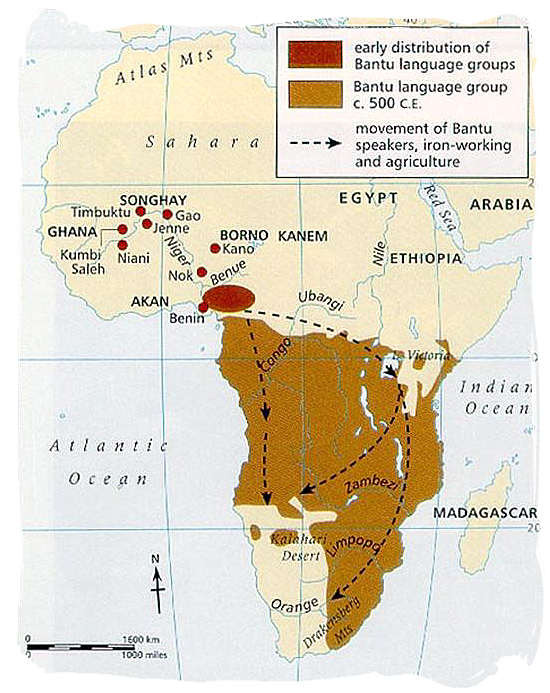Thousands of years ago, long before colonial borders divided the continent, a quiet yet powerful movement began that would change the face of Africa forever. It was not an empire rising or a single dramatic battle, but a steady flow of people, language, and culture—the Bantu migrations. This epic movement of communities is one of the most significant chapters in African history, shaping the continent’s cultural, linguistic, and agricultural landscape in ways still felt today.
The Bantu were a group of people who spoke related languages belonging to the Bantu language family, a branch of the larger Niger-Congo language group. Around 3,000 years ago, they began leaving their original homeland, believed to be somewhere in present-day Cameroon or the borderlands of Nigeria. What followed was not a single journey, but a slow, centuries-long expansion that carried them southward and eastward across the continent.
This migration was driven by many factors—climate changes that affected farmland, the search for new pastures, and the knowledge of ironworking that allowed them to clear dense forests for settlement. As they moved, they brought with them skills that transformed the regions they entered. They cultivated crops like yams, millet, and later bananas, and they kept livestock such as cattle and goats. Their mastery of iron tools and weapons gave them an advantage in both farming and defense.
By the first millennium CE, Bantu-speaking communities had reached the Great Lakes region, the savannas of southern Africa, and the coastal regions of East Africa. In their wake, they left more than just settlements—they spread languages that would eventually form a vast linguistic network stretching from Central Africa to South Africa. Today, Swahili, Zulu, Shona, Kikuyu, and hundreds of other languages trace their roots back to the Bantu tongue.

The Bantu migrations also reshaped Africa’s cultural map. They blended with local hunter-gatherer and pastoralist communities, sharing technologies, traditions, and belief systems. In some regions, they adopted local practices; in others, they introduced new social structures, agricultural methods, and artistic expressions. This cultural exchange gave rise to diverse societies that still carry elements of that ancient interaction.
Yet the migrations were not without conflict. Competition over resources sometimes led to battles with indigenous groups. Despite this, the overall pattern of the Bantu expansion was one of integration and transformation, weaving a common cultural thread through vast parts of sub-Saharan Africa.
Today, historians and linguists continue to study the Bantu migrations to better understand Africa’s past. The movement explains why so many distant communities share linguistic similarities, agricultural traditions, and even elements of music and dance. It also serves as a reminder that Africa’s history was dynamic and interconnected long before European contact.


I got what you mean , thanks for posting.Woh I am lucky to find this website through google. “Success is dependent on effort.” by Sophocles.